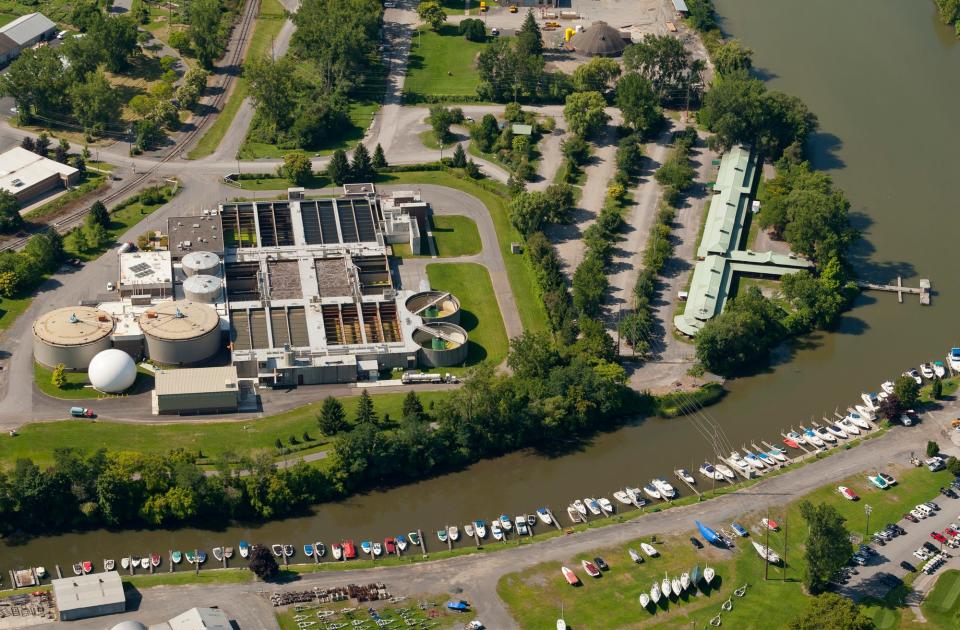Ithaca backs electric projects, looks to move on from fossil fuel
Amidst a state push for clean energy, the city of Ithaca has announced a $1.9 million suite of electrification projects poised to push the city’s reliance on fossil fuels even closer to being a thing of the past.
Plans for building electrification and other environmental initiatives have been outlined in the city’s Green New Deal, managed by its Sustainability & Climate Justice Advisory Commission. The city Office of Sustainability announced the electrification of 10 commercial buildings, adding to other plans already outlined in the deal.
The Ithaca Green New Deal is a city program that outlines steps the city could take to achieve “carbon neutrality and climate justice by 2030,” reduce vehicle emissions from the city by 50% from 2001 levels by 2025, share benefits with historically disadvantaged communities, and power city government fully through renewable energy sources by 2025.

“Electrify Ithaca has come a long way since 2022 and we’re finally seeing the results of the hard work pay off”, said Rebecca Evans, City of Ithaca director of sustainability. “It’s a vote of confidence that community leaders, like those represented in this cohort, to take this big step in decarbonizing their operations and I’m sure many will follow in their trailblazing footsteps.”
The names and locations of the commercial buildings that have or are being electrified are listed below:
• Gimme Coffee, 506 W. State St. (café and roastery)
• Significant Elements, 212 Center St. (nonprofit architectural warehouse)
• Historic Ithaca, 210 Center St. (nonprofit cultural organization)
• Ithaca Piercing & Tattoo, 120 S. Cayuga St. (retail)
• First Baptist Church, 309 N. Cayuga St. (place of worship)
• St. James AME, 116 Cleveland Ave. (place of worship)
• Lifelong Senior Center, 119 W. Court St. (nonprofit)
• Aeroplane Factory, 120 Brindley Street (office spaces)
• Circus Culture, 123 W State Street (cultural organization)
• Ithaca Area Wastewater Treatment Plant Administrative Building, 525 Third St. (municipal building)
• Petrune and Home Green Home, 126-128 E State St (retail)

The impact of electrification and a step toward a greener city
The electrification of these buildings represents nearly 680 metric tons of annual avoided greenhouse gas emissions based on EPA estimates, and a step toward the “Built Environment” component of the city’s Green New Deal, which is tracked by the web-based Ithaca Green New Deal Scorecard.
The Built Environment includes all buildings where city residents live, work, socialize, shop and obtain services — homes, offices, businesses, hospitals, places of worship, schools and stores.
Of the $1.9 million the city dedicated to these projects, 1$1.4 million is being subsidized by state and federal incentives.
The city partnered with the Brooklyn-based BlocPower to manage the Built Environment program and institute building electrification and weatherization upgrades and in 2023, focused on non-residential buildings to take advantage of funding from New York State Electric & Gas (NYSEG) as a part of its NYS Clean Heat Rebate Program for commercial properties installing heat pumps in gas-constrained areas.
“The city of Ithaca continues to lay the groundwork for what a successful city-wide decarbonization movement looks like,” stated BlocPower program manager Ethan Bodnaruk. “This movement, and the city, are crucial to inspiring other cities and jurisdictions.”
A few of the early successes of the IGND include; the adoption of the Ithaca Energy Code Supplement, which requires all new buildings to meet net-zero energy requirements by 2026; the launch of the Electrify Ithaca program, which leverages private capital, aggregated building portfolios, and government incentives to reduce building electrification costs; the completion of comprehensive greenhouse gas inventories that capture the full lifecycle of methane and emissions from the electric grid, and defining “climate justice communities” in the local landscape.
This article originally appeared on Ithaca Journal: Ithaca on way to being green with $1.9 million projects

